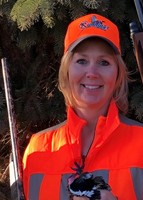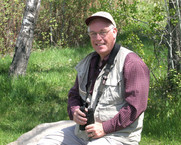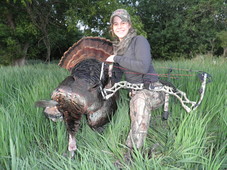|
March 2021

Spring Turkeys
Spring is here, which means the turkey hunting season is upon us. This year’s spring season will open April 14. Now is a good time to start making your plans.
Wild turkey hunting is very popular in Minnesota. Its elements - setting decoys, listening for gobbles and calling to birds - make for unforgettable experiences. If you never tried turkey hunting now is the time to learn.
|
Learn to Hunt Turkeys
The Minnesota Department of Natural Resources’ Learn to hunt webpage has information on how to turkey hunt and a two-part online video class to help you learn the basics of turkey hunt.
This year’s spring hunting season extends from April 14 to May 31. Beginning in March, all spring turkey hunters can purchase a license over the counter for a specific time period. A spring turkey license enables you to hunt all permit areas in the state, with the exception of the three major wildlife management areas during the A through C period. The firearms season for hunters 18 and older is divided into six hunt periods; A through F. Youth and archery-only license holders may hunt the entire season. More information about turkey hunting in Minnesota is available on the Wild turkey hunting webpage.
Reminder: Time to buy new licenses
It is the time of year when trappers, hunters and anglers need to buy new fishing and hunting licenses. Licenses for 2020 expired Sunday, February 28. Licenses for 2021 are available wherever hunting and fishing licenses are sold, online and by telephone at 888-665-4236. For details: DNR buy a license page. Please note that there are new requirements this year when buying a Married Combination License.

NEW! Shotgun Selection Tips, April 7
Join BOW Steering Committee member Sheri Brengman as she provides tips on how to select your first shotgun. Sheri will discuss the different features of shotguns to consider. If you are interested in purchasing a shotgun for turkey hunting, upland bird hunting or target shooting, this free webinar is designed to help you learn what to look for in a shotgun. The webinar will be April 7, noon to 12:30 p.m. Pre-registration required here.
|
A-1 Archery Turkey Clinic
Mike Foster and Dana Keller are teaming up at A-1 Archery in Hudson Wisconsin to offer a turkey hunting clinic on March 30 at 6 p.m. This class is open to the public. For more information call 1-715-386-1217. Mike is an expert at both turkey and predator calls. BOW will not be hosting a turkey series or hunt this year due to COVID restrictions.

Attracting Spring Hummingbirds Recorded Webinar
If you missed the live webinar by Carrol Henderson on how to attract hummingbirds to your backyard the presentation is available for viewing at: Activity descriptions | Minnesota DNR (state.mn.us) under the other recreation tab.
|

Turkey Facts
- Wild turkeys inhabit most of Minnesota. Adult turkeys are about 3 feet long with a 4-foot wingspan. Males on average weight between 12 and 22 pounds and females 8 to 12 pounds.
- Adult males are called toms or gobblers while juveniles are called jakes. Adult females are hens and juveniles are called jennys.
- Both genders have a small red head, neck, snood (the fleshy growth that hangs over the beak), and wattle (the fleshy growth that hangs beneath the chin). Males have beards that can reach 7 inches, some females may have beards as well. Males have spurs on their legs used for protection and defending territory. Males also have large tails used in courtship displays.
- Male feathers are mostly dark brown and black and more iridescent than females. Female feathers are more camouflaged in color to provide them with better security while on the nest or caring for their young.
- Male turkeys gobble to call to a hen but can make an assortment of sounds including yelps, gobbles, purrs, putts, and others. Calling can become a fun hobby and art form by itself. Females can make a purring sound.
- Wild turkeys mate from April to May with hens laying 10 to 12 eggs, one egg per day. The eggs will incubate for about 28 days before hatching. The young, called poults, are able to fly in about three to four weeks and will stay with their mother for up to four months.
- Turkeys roust in trees at night to avoid predators such as great-horned owls, eagles, coyotes and foxes. During the day they are found in fields and forests eating a diet of ferns, grasses, grain, buds, berries, insects, acorns and even frogs and snakes.
- A turkey’s gender can be determined from its droppings –males produce spiral-shaped poop and females’ poop is shaped like the letter J.
- Wild turkeys can run at speeds of up to 25 miles per hour and fly as fast as 55 miles per hour.
|
|